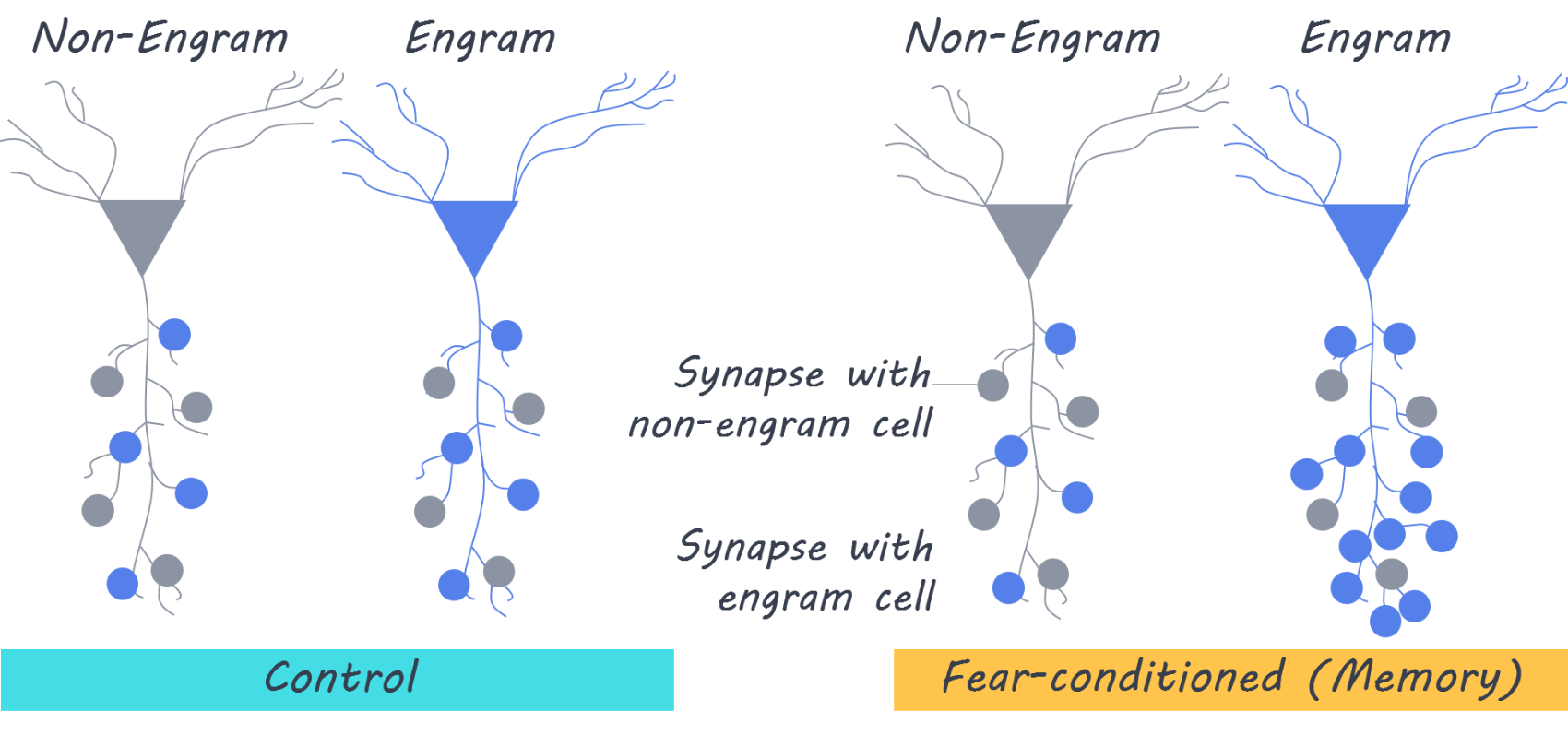Memory is Dependent on Synapses Between Engram Cells
What's the science?
Memory is thought to be encoded in the brain by a set or pattern of dispersed neurons in the brain called an ‘engram’. It has also been suggested that changes in the strength of the connections between neurons (i.e. synapses) in the brain is how memories are formed. This week in Science, Choi and colleagues used a new green fluorescent protein technique in mice to better understand how engram cells are connected in the brain and whether synaptic connections between engram cells underlie memory formation.
How did they do it?
Mice underwent a fear conditioning task, in which some mice received foot shocks (either weaker or stronger) during an experiment and some mice did not. Mice typically freeze due to fear when placed in a particular environment in which they remember experiencing something negative (such as a shock to their foot). Using doxycycline, they labeled the brain cells which were activated during the conditioning - these are referred to as the engram cells, because they are involved in memory during the fear conditioning task. Next, they designed a novel modified green fluorescent protein labelling technique called dual-eGRASP, which allows for visualization of the synapse between neurons, including identifying synapses formed by two separate groups of pre-synaptic (input) neurons as well as post-synaptic neurons. They then used this technique to visualize the connectivity (strength) of synapses in engram cells (labeled as active during fear conditioning) versus non-engram cells.
What did they find?
The dual-eGRASP technique successfully visualized synapses from separate populations of pre-synaptic neurons to hippocampal CA1 neurons from two different inputs, even when the synapses from the two populations were interspersed. When comparing engram-engram synapses versus synapses that involved non-engram cells (which were not labeled as active during fear conditioning), they found that dendritic spines were larger and more numerous on engram cells receiving input from other engram cells only. This indicates that synapses activated between engram cells during fear conditioning could cause synaptic connectivity between these cells to strengthen. When assessing the relationship between synaptic strength and memory, the authors found that synapses between engram cells were stronger and denser after receiving a stronger shock versus after receiving a weaker shock. This indicates that strength of a memory (due to strength of a foot shock) is related to synaptic connectivity and the strength of connections between engram cells in the hippocampus.
What's the impact?
This is the first study to show that engram neurons that are activated during a learning task (fear conditioning) are more likely to have stronger, denser synaptic connections with each other. We now know that the, strength of connections between engram cells in the hippocampus underlies memory formation and strength.
J. Choi et al., Interregional synaptic maps among engram cells underlie memory formation. Science (2018). Access the original scientific publication here.


